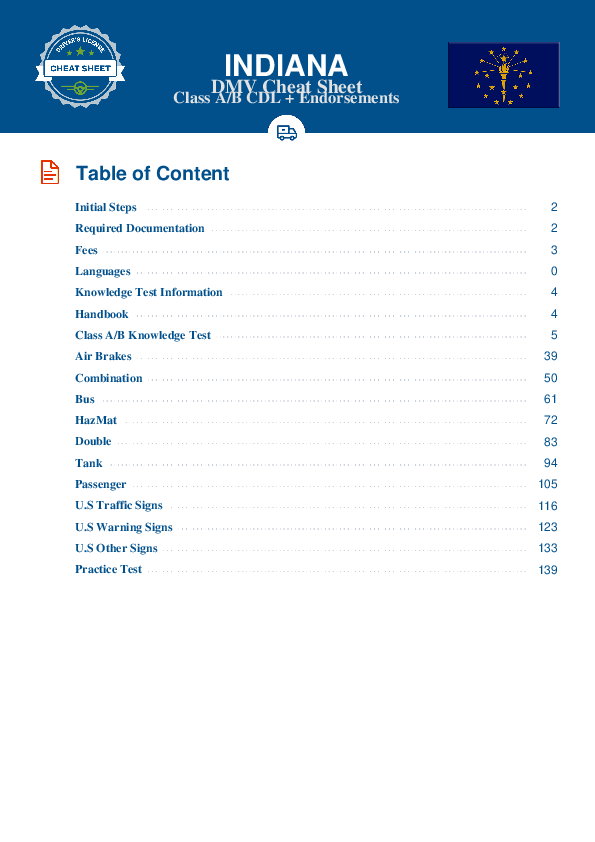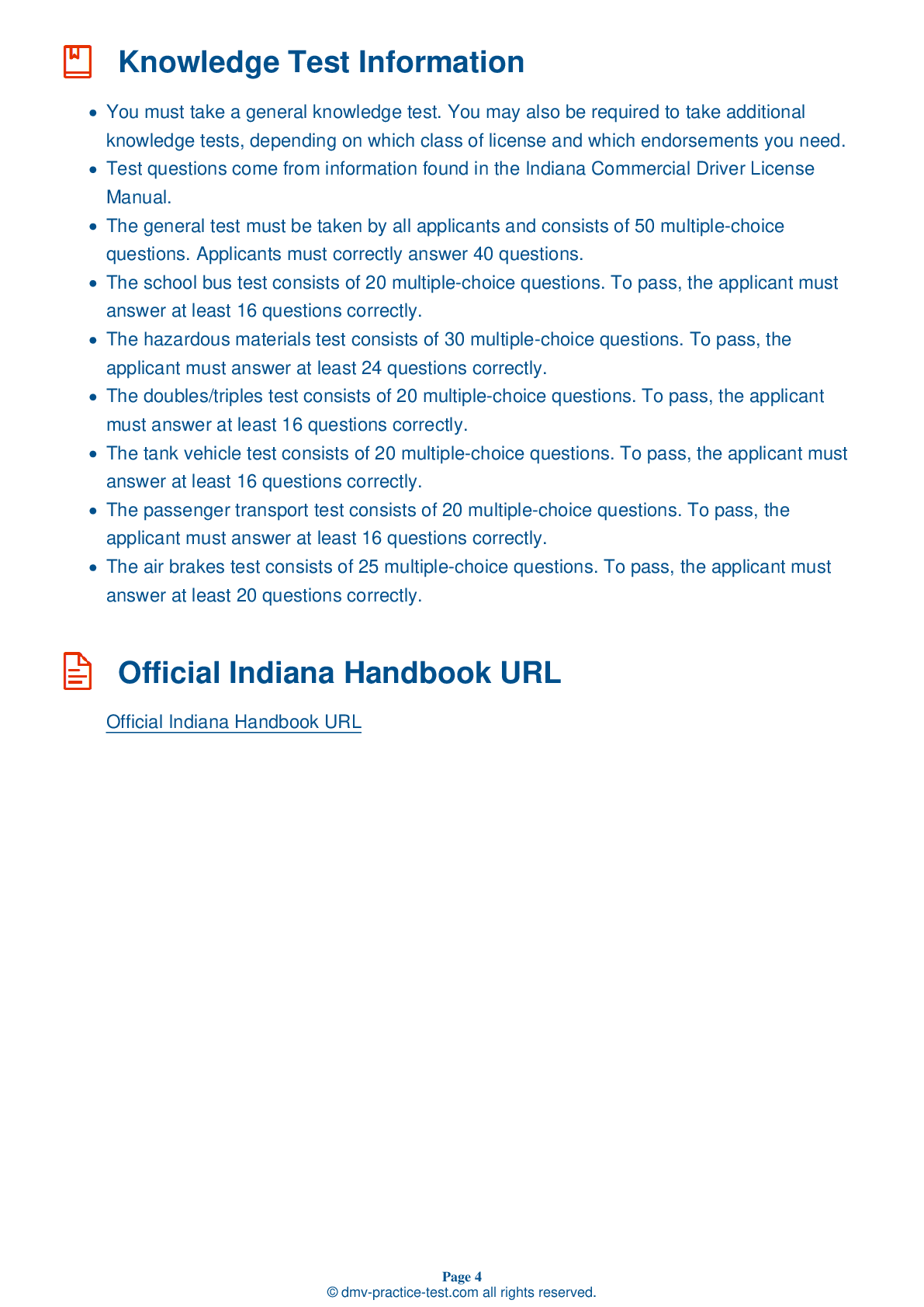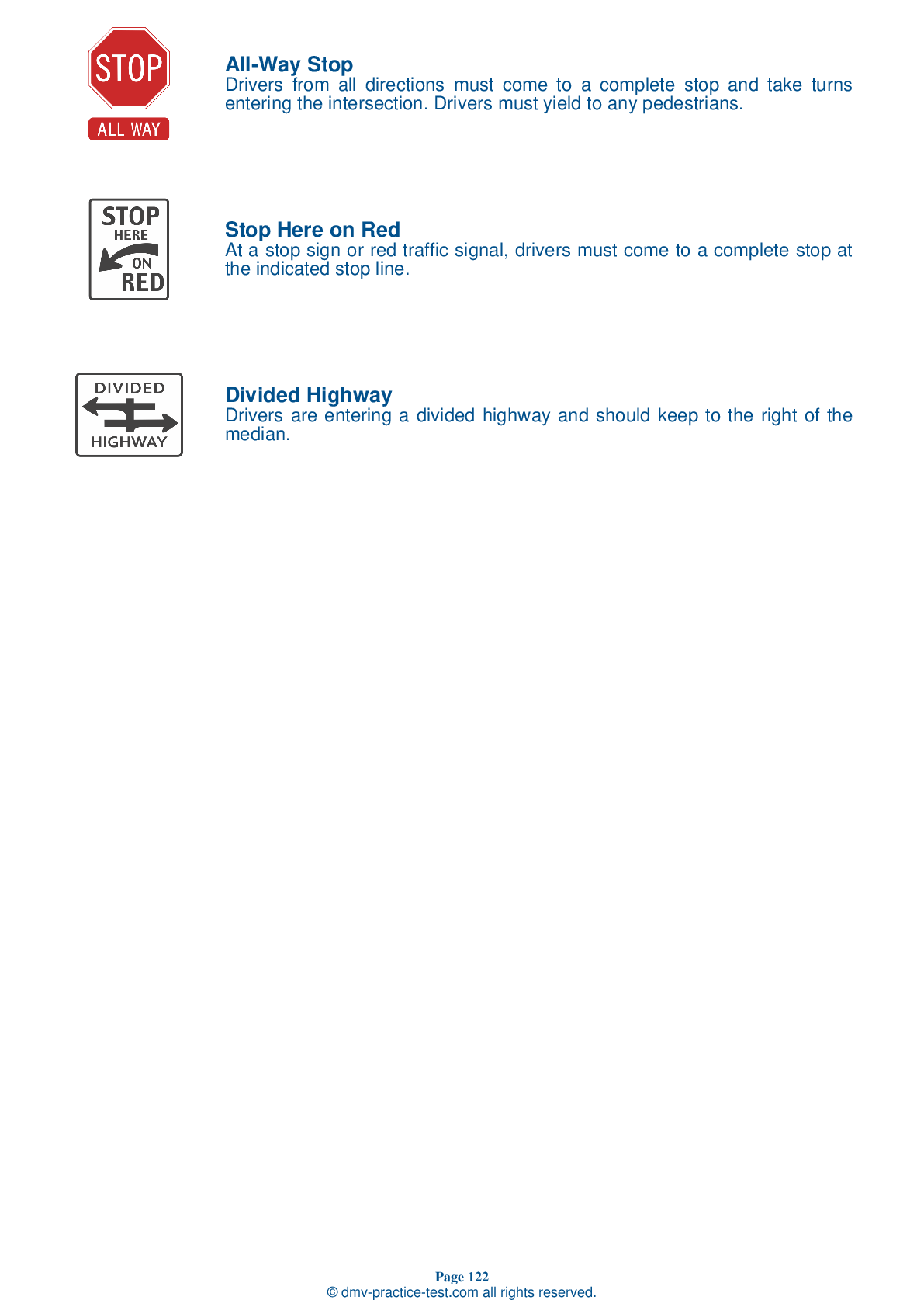Combination #1
Combination Vehicles Practice Test | Indiana 2026 #1
Train for FREE online with our Indiana CDL combination vehicle test. The official exam test consists of several obligatory parts, with all of them checking your knowledge of different blocks of road rules. If you need to obtain a IN combination license in 2026, practice as much as possible. Free sample tests published on our website will help you check and improve your knowledge and boost your grades. Please bear in mind that DMV requirements for issuing a combination license may vary from state to state.
20
16
20
1 . During a trip, which shut-off valves should be open?
No shut-off valves should be open.
When starting a trip, be sure that all shut-off valves are in the open position, except for the last valves on the rear trailer. It is important that air reaches the brakes on all trailers and that the air is not able to escape from the back of the vehicle.
2 . A shut-off valve:
Should always be open.
Shut-off valves are used in air supply lines to control the passage of air from one trailer to another. The rear shut-off valve should always be closed to prevent air from leaving the braking system.
3 . What is the Johnson bar?
A valve that allows for the release of excess pressure in the braking system
The trailer hand valve, also called the trolley valve or Johnson bar, is used to work the trailer brakes. It should be used only to test the brakes.
4 . When a combination vehicle goes around a corner:
It is acceptable for street signs to be knocked over if they are too close to the road.
When a vehicle goes around a corner, the rear wheels follow a different path than the front wheels. This is called off-tracking. This effect is especially pronounced on vehicles with trailers.
5 . Driving a combination vehicle ____ than driving a single vehicle.
Is safer in inclement weather
Driving a combination vehicle usually requires more skill than driving a single vehicle. Combination vehicles are generally longer and heavier than single commercial vehicles.
6 . To lower the risk of a rollover, you should:
Stack the cargo as high as possible.
To lower the risk of a rollover, load your cargo as closely to the ground as possible. To further reduce this risk, take curves and corners slowly.
7 . Operating a combination vehicle usually requires ____ operating a single vehicle.
Exactly the same level of skill as



